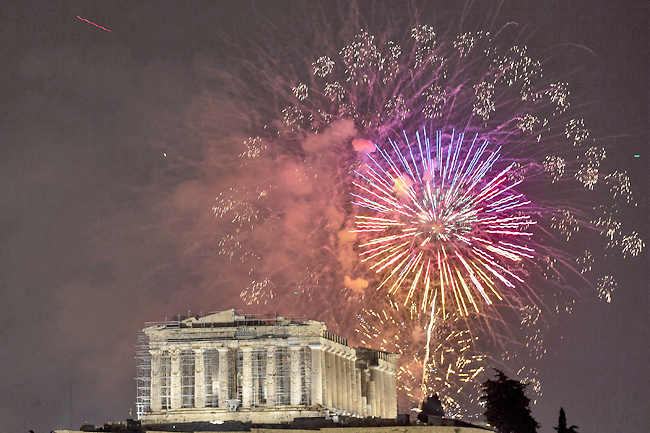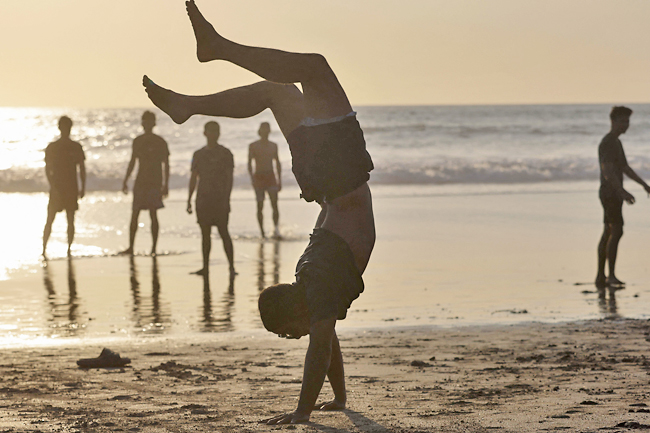AFP – While French Polynesia plans to limit their number of visitors to 280,000 per year by 2027 to avoid overtourism, other popular destinations took the plunge this summer to regulate their tourist numbers or introduce similar restrictions.
SARDINIA, ITALY
The magnificent Italian island in the summer took action to protect its turquoise waters and golden sandy shores.
In the east coast, where travellers in recent years singled out as the new place to discover in Sardinia, the municipality of Baunei has decided to restrict the number of daily visitors wishing to enjoy several of its local beaches.
The decision covers four magnificent beaches, including Cala dei Gabbiani and Cala Biriala, which were limited to 300 vacationers a day.
Meanwhile, the larger Cala Mariolu beach, the best-known in the area, could only accommodate 700 people. A further measure was taken to preserve Cala Goloritze, which can only be reached by boat or on foot (after a great deal of effort!), and there is now an entrance fee.
Summer visitors had to plan their visit at least 72 hours in advance to reserve their place, via a dedicated application called Cuore di Sardegna.





On the other side of the island, where tourist crowds have been noticeable for many years, the Italian authorities have also taken matters into their own hands, notably in the village of Stintino, where the difficulty of finding a parking space reflects how much its pink sandy beach attracts many visitors.
At La Pelosa, the number of visitors is now limited to 1,500 per day, with an entrance fee charged. What’s more, you’re no longer allowed to bring your own towel. Instead, you’ll need a beach mat, made of straw or fibre, which won’t pick up sand, unlike wet towels.
THE ACROPOLIS, ATHENS, GREECE
As of September, access to Greece’s iconic tourist site is restricted. A quota of 20,000 visitors per day has been set, with the aim of guaranteeing both their safety and preserving the Acropolis.
This quota remains very high, however, since it is estimated that the site currently receives up to 23,000 curious visitors every day.
However, the new policy involves limiting the number of visitors by allocating them time slots. Given the heat, it’s only logical that many tourists come in the morning, creating a teeming anthill of tourists all around the site. Initially, this is being introduced as a trial phase, but the Greek authorities aim to officially roll out the reservation system from April 2024.
MOUNT FUJI, JAPAN
Restrictions could be in the pipeline at Mount Fuji. Japan intends to preserve its iconic landmark, which is revered by the country’s inhabitants, with older generations even regarding it as a deity. In Japanese culture, everyone must climb Mount Fuji at least once in their life. However, it’s not just Japanese people who have set themselves this goal, as many international visitors are keen to rise to the challenge too.
And there have been plenty of them since Japan’s borders reopened post COVID-19.
The base station from which the Mount Fuji hike departs welcomed four million people this summer, an increase of 50 per cent on 2013. A quarter of them were non-Japanese.
The authorities are therefore considering limiting the number of visitors to help preserve the Unesco World Heritage Site.
BALI, INDONESIA
Again, no official measures have yet been taken, but the world-famous Indonesian diving destination is looking at ways to better regulate its tourist numbers. In July, Bali welcomed 541,353 visitors, up 13.21 per cent on June, according to figures from Bali Management Villas. Since the start of the year, almost three million holidaymakers have strolled through the rice paddies and taken a break from the hustle and bustle, particularly in Ubud.
In addition to the inappropriate behaviour of some tourists, such as a Russian traveller posing with no pants on a sacred Hindu site – his photo causing quite a stir – Bali also intends to better preserve its environment.
According to Lonely Planet, the authorities are currently crunching the numbers to set a limit on the number of travellers that can be accommodated.
The island’s governor, for example, has suggested an annual figure of seven million. In comparison, Bali welcomed 6.3 million travellers in 2019.
In addition, a tax for international travellers, set at USD10 per person, is to be introduced starting next year.




